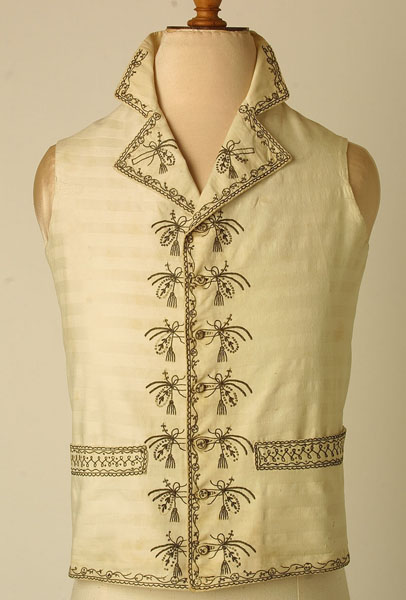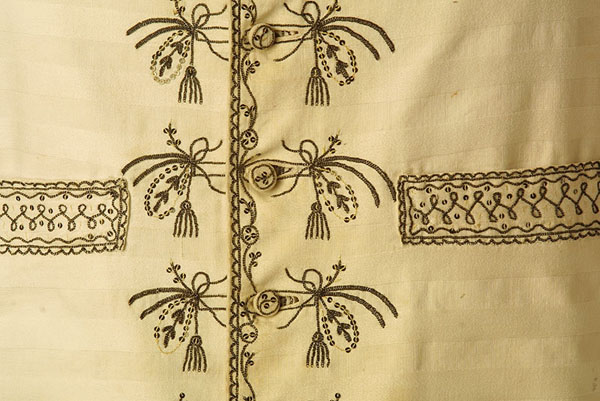waistcoat
Summary
White cotton waistcoat with woven white satin stripe,back and lining white cotton, embroidered with metal thread and spangles fronts each in one section,fastening with eight embroidered buttons to 5ins. below high round neck with standing collar; neck and collar embroidered on both sides,to be turned back as revers if required; straight waistlins; slit pocket (white cotton) each side; back in two sections,gusset inserted at back of neck,two pairs of tape ties at waist; collar,front and bottom edges,top of pocket,embroidered in small stem and scallop design in metal thread worked in chain stitch,and spangles; bow and tassel design worked down front edges by buttons and buttonholes
Display Label
For centuries, the waistcoat was one of the chief areas for decoration in men's dress. During the eighteenth century, waistcoats often matched the coat or jacket and the breeches, either in fabrics like silk brocades, damasks or velvets, or in embroidered decoration in court suits. The main image shows a sky blue silk damask waistcoat which was made of the same fabric as a banyan or gown, and worn as an outfit. By the later eighteenth century waistcoats shortened and ended in a horizontal line at the waist. New fabrics like cotton became fashionable, often embroidered in stylised neo-classical designs. During the nineteenth century, the waistcoat if anything became more of a focus for attention, with the vibrant damasks and brocades contrasting with the increasingly dark, plain and sober cloth suits. Today, 2-piece suits are popular, and it is more often the jazzy tie which lifts the monochrome tone of the outer fabric, and which reveals a little of the character of the wearer.
Object Name
waistcoat
Date Created
1785-1790
Dimensions
Length: 57.5cm
accession number
1955.255
Place of creation
England
Medium
Legal
© Manchester Art Gallery


